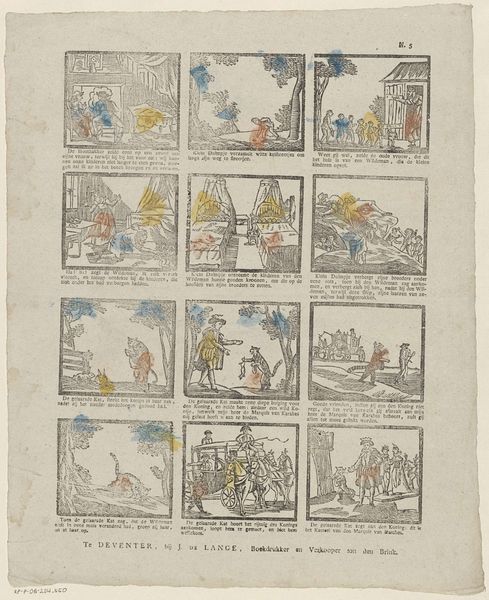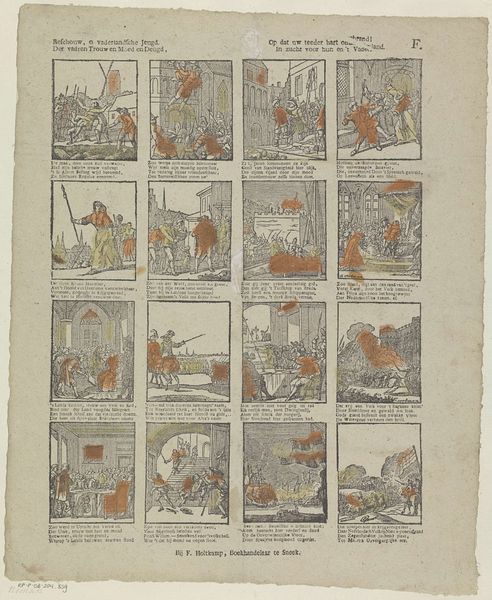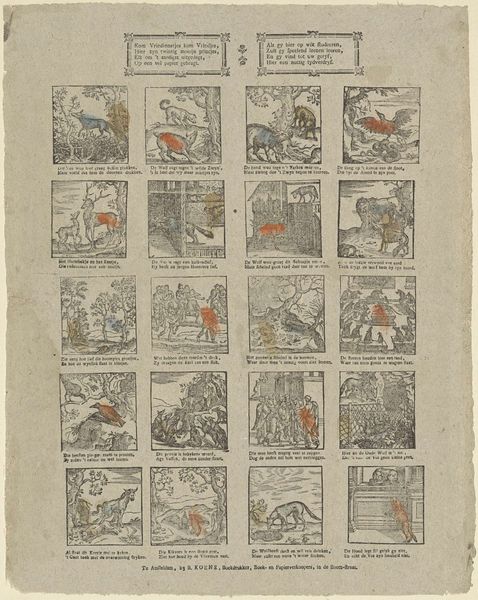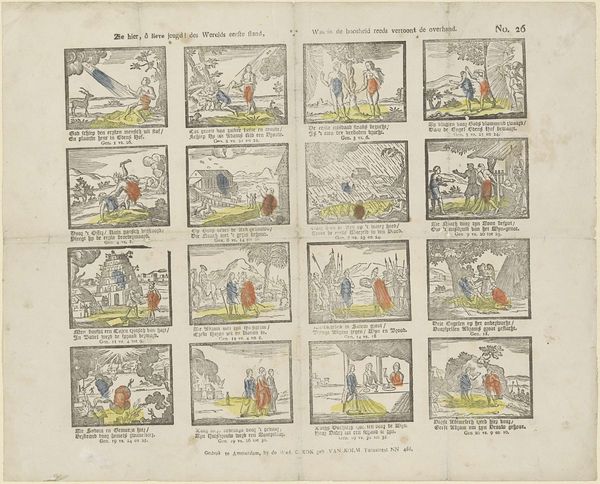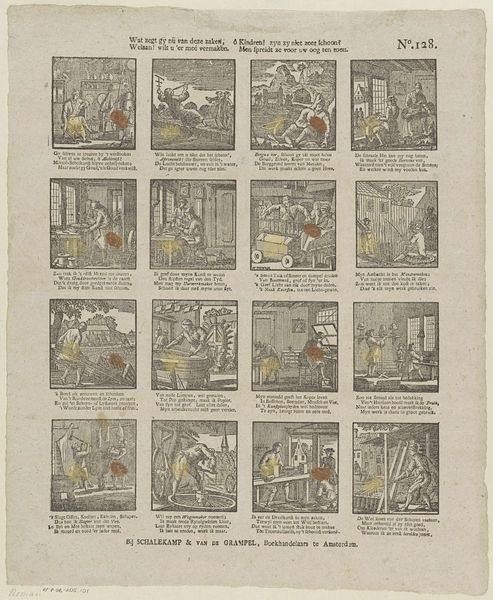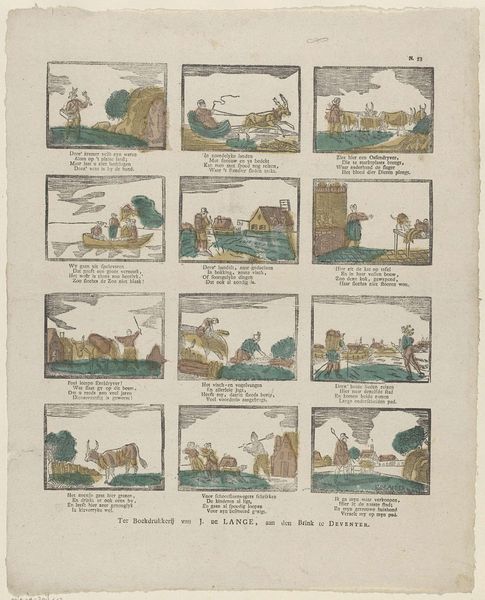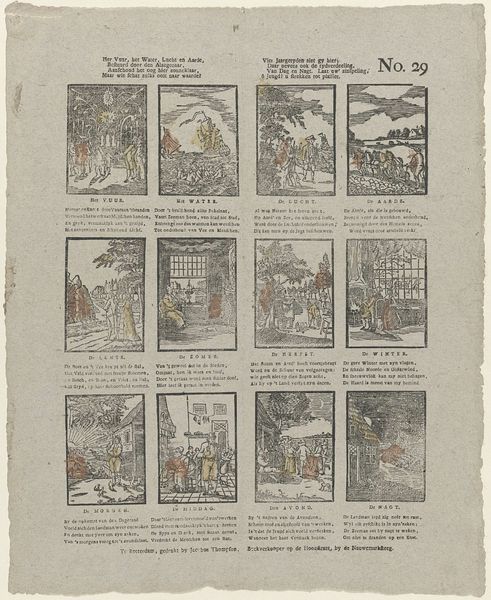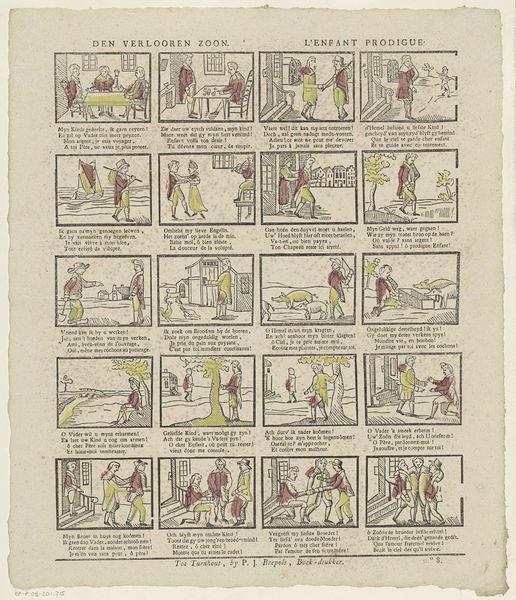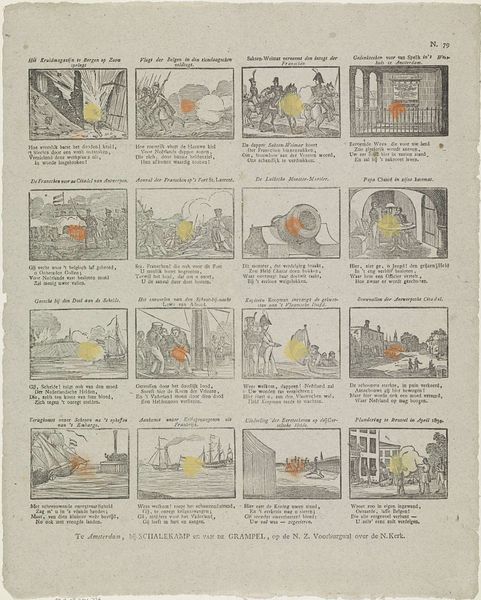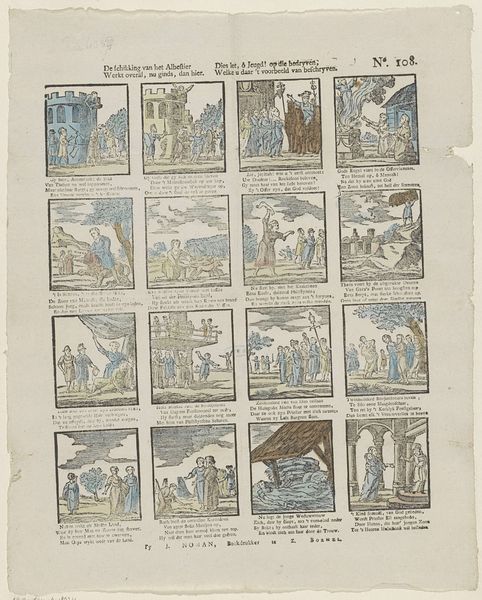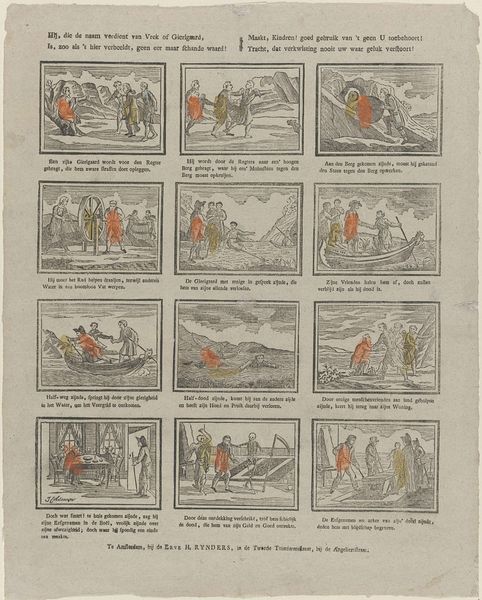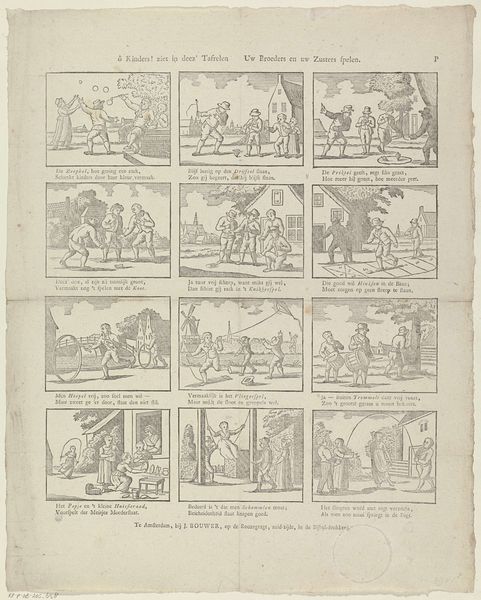
Zie lieve kleinen ziet kan u dit werk bekoren, / Dan word u deze prent uit vriendschap aangeboon. / De liefde voor de kunst! o kleinen staat u schoon, / Uit een gering begin word grooter zaak geboren 1781 - 1828
0:00
0:00
print, engraving
#
comic strip sketch
#
narrative-art
#
dutch-golden-age
# print
#
old engraving style
#
comic
#
genre-painting
#
history-painting
#
engraving
Dimensions: height 397 mm, width 316 mm
Copyright: Rijks Museum: Open Domain
Curator: This engraving, titled "Zie lieve kleinen ziet kan u dit werk bekoren," is attributed to Jan Hendriksen and dates back to somewhere between 1781 and 1828. What strikes you most about its materiality and form? Editor: The most striking aspect is its composition. It’s almost like a page from a comic book, but the old engraving style and the antiquated text give it a unique feel. How should we interpret this blend of image and text within its historical context? Curator: Think about the means of production for this piece. Engravings allowed for mass production and distribution of images and text. Does it suggest anything about accessibility and the intended audience for this piece during that period? Editor: I suppose it made it easier for a broader segment of the population to see the image and read the text? The combination really emphasizes the narrative quality and accessibility, not just for the wealthy, which may not have been the case for other art forms. Is there a further meaning in this accessibility? Curator: Consider the relationship between the images, text, and the viewer's role. This work merges traditionally distinct art categories, bridging high art and accessible print. Is there something to this blending that elevates everyday themes? Editor: I think so! The combination of comic panels, combined with moralistic undertones, implies a message accessible to all. Curator: Absolutely. We see an early instance of making art that could be disseminated widely, thereby engaging diverse audiences. Now I can understand more clearly how prints became a vital medium for conveying social and cultural messages. Editor: I agree. Analyzing this piece through the lens of production, materials, and audience reveals new avenues of interpretation that go beyond mere aesthetic appreciation.
Comments
No comments
Be the first to comment and join the conversation on the ultimate creative platform.
